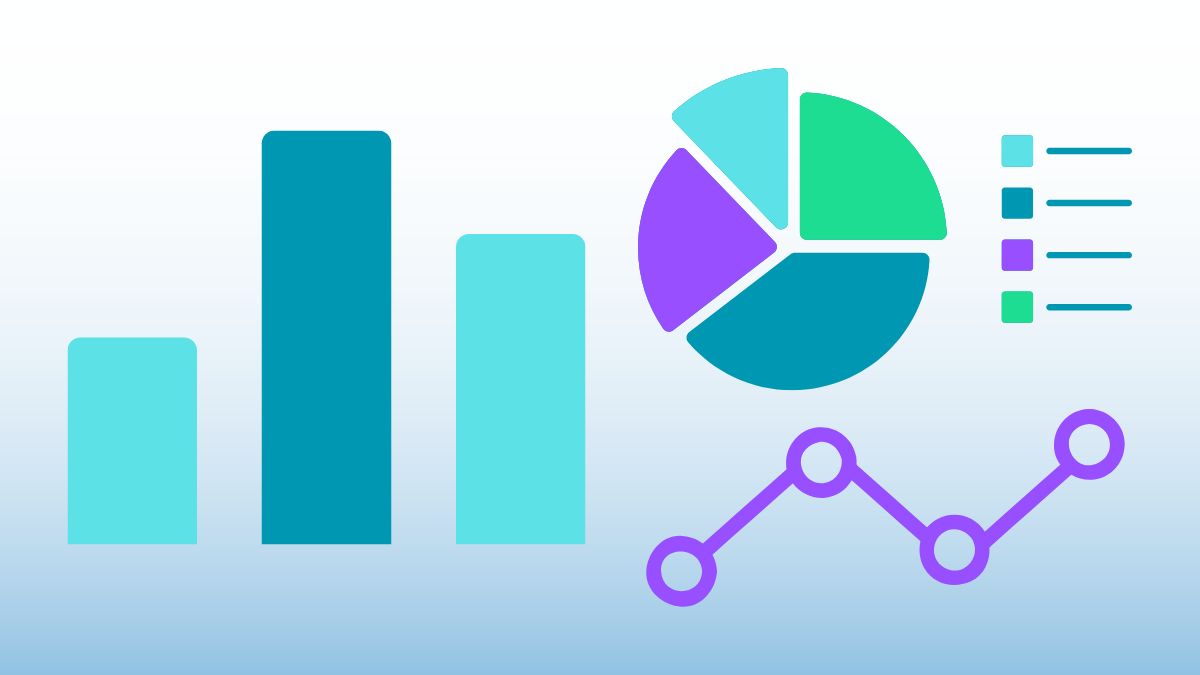You found our guide on DEI dashboard examples and definition.
A DEI dashboard is a user interface that gives a graphical view of a company’s current state of diversity, equality, and inclusion. The tool may provide information on your workforce regarding gender, age, color and ethnicity, pay, retention rates, and neurodiversity. The purpose of the dashboard is to help a company better direct its DEI initiatives and activities.
This topic can help with diversity and inclusion activities for work. Creating an equitable workplace is a way to improve company culture.

This article includes:
- what is a DEI dashboard?
- what are diversity metrics?
- what is the purpose of a diversity dashboard?
- how to build a DEI dashboard
- DEI dashboard examples
Here we go!
What is a DEI dashboard?
A DEI dashboard is a visual tool that shows diversity key performance indicators, or KPIs. These KPIs measure how well a company’s diversity, equity, and inclusion efforts are working. The dashboards cover various aspects like demographic data, gender pay equality, and company culture.
To keep an eye on your workforce’s status, you will monitor factors like gender, beliefs, neurodiversity, ethnicity, age, and soft skills. Dashboards present this data visually, often using graphs and charts, to give you a clear view of your progress in achieving DEI goals.
Using a dashboard to track diversity metrics allows you to create reports for sharing with stakeholders and to monitor ongoing improvements. This information helps you devise strategies to address any performance gaps, a crucial step in building a workplace that appreciates and values diversity. To do this effectively, you must gather and interpret the right data.
What are diversity metrics?
Diversity metrics are data-driven measurements used to assess the variety of backgrounds, experiences, and perspectives within an organization’s workforce. These metrics include information on factors such as gender, ethnicity, and age. By tracking diversity metrics, companies can gain valuable insights into the composition of their workforce and evaluate their progress in fostering a more inclusive and equitable workplace. These measurements help organizations make informed decisions and implement strategies to enhance diversity, equity, and inclusion within the company. Below are some metrics companies may be interested in tracking.
1. Equitable Promotion and Progression
An important diversity metric for your dashboard is the promotion rate. Discrimination can show up in how employees earn promotions. Including the promotion rate can help you spot any unfairness. When you compare how leaders promote different groups with the overall rate, you can find out if some groups are unfairly missing out. Fixing these differences ensures that all employees have a fair chance to move up and grow in their careers.
2. Engagement and eNPS
Engagement and Employee Net Promoter Score, or eNPS, metrics on a dashboard measure employee satisfaction and loyalty. Engagement metrics assess how involved and satisfied employees are with their work and the organization. eNPS, on the other hand, gauges employees’ willingness to recommend their workplace to others. These metrics offer insights into the overall well-being of your workforce and the strength of your employer brand. By monitoring these figures, organizations can identify areas that need improvement. Further, firms can make informed decisions to boost employee morale and ultimately create a more positive and productive work environment.
Want some free team building tools?
$49 value (100% free)
- 100+ fully tested icebreaker questions
- 24+ themed Bingo generators
- 5+ PDFs (including the 8% Rule)
- 2024 team building calendar
- and more...

Enter your email for instant access
3. Closing the Pay Gap
Pay equity, a crucial diversity and inclusion metric, should be included in your dashboard. This metric involves examining your pay structures to identify any potential pay gaps or imbalances among different demographic groups. Although the aim is to provide equal pay for equal work, disparities can sometimes persist. Consistently assessing your salary practices is important to maintain fairness in compensation. If any inequities are found, it is essential to review your compensation policies and take steps to fix any discrepancies.
4. Equity in Learning and Development
Incorporating equity in learning and development, or L&D, as a DEI metric can provide insights into opportunities for professional growth among different demographic groups. This metric assesses participation rates, training availability, and skill development initiatives across your organization. By analyzing whether employees from various backgrounds have equal access to L&D opportunities, you can identify potential barriers and ensure an inclusive approach to career advancement. This approach enhances employee skills, boosts job satisfaction, and promotes a more equitable workplace.
5. Representation Across Levels
Assessing the representation across organizational levels is a key diversity metric. This metric reveals employees’ roles across various tiers within your company’s hierarchy. Furthermore, measuring representation offers valuable insights into the degree to which diverse talent is fairly represented in leadership and decision-making positions. When you compare the demographic makeup at different levels, you can pinpoint any potential diversity gaps in your organization’s leadership pipeline. Correcting imbalances in representation can promote a more inclusive and fair corporate structure.
6. Supplier Diversity
Supplier diversity is an often overlooked diversity metric that has a significant impact on your organization’s commitment to inclusivity. This metric evaluates the diversity of your company’s suppliers and vendors. Diverse supplier partnerships contribute to economic empowerment within marginalized communities. Further, working with diverse suppliers demonstrates your company’s dedication to supporting a diverse business ecosystem. Tracking supplier diversity on yourdashboard can showcase your commitment to social responsibility and strengthen relationships with vendors who share your values.
What is the purpose of a diversity dashboard?
HR managers may benefit from a more diverse and inclusive workforce by using a DEI dashboard to enhance the hiring, firing, and promotion processes. Some advantages of using this tool and regularly keeping track of DEI data include the following.
1. Streamline Data Collection Efforts
While spreadsheets and surveys have their merits, they can be difficult to manage and interpret. A DEI dashboard resolves this challenge. Centralizing your data through a diversity dashboard is far more efficient than maintaining separate spreadsheets for each metric. This tool provides data on diversity, equity, and inclusion in accessible visual formats. Therefore, HR and company leaders can access essential insights through impactful visuals tailored to their needs.
2. Ensure Transparent Insights into DEI Status
A DEI dashboard gives you a clear and thorough view of where your diversity, equity, and inclusion efforts stand.
This dashboard helps answer important questions like:
- “Do we have plans to remove obstacles to diversity and inclusion?”
- “Where do we need to improve our commitment to inclusivity?”
- “Is our dedication to diversity and inclusion evident in our hiring practices?”
With this information, you can set practical goals to enhance diversity, equity, and inclusion in your organization.
3. Monitor and Elevate DEI Initiatives
A Diversity, equity, and inclusion dashboard makes it easier to grasp visualized data. Thus, viewers can use these trends and patterns for well-informed decisions that support the organization’s commitment to diversity, equity, and inclusion.
For example, a the dashboard can give insights into:
- how inclusive your company culture is.
- how well you are doing in attracting, hiring, and keeping diverse talent.
- if your compensation policies are fair.
- whether everyone has equal opportunities.
- if promotions are done fairly.
These insights help guide specific efforts for growth and improvement.
4. Cultivate a Strong Organizational Culture
In companies that embrace workplace diversity, employees are more engaged. The real-time insights from the DEI dashboard promote open discussions, learning, and growth. By showcasing achievements and progress, these dashboards encourage teamwork and engagement, making diversity a shared priority for the entire team. This approach reinforces a workplace identity centered on diversity, equity, and inclusion, which leads to a vibrant organizational culture. Embracing diverse talent enhances creativity, innovation, and overall performance.
5. Demonstrate Legal Compliance
In the United States, legislation exists to protect employees from workplace harassment and discrimination based on factors like age, race, sexual orientation, and religion. These laws also safeguard individuals against ableism, ensuring fair treatment for those with physical or mental impairments. The legal framework emphasizes hiring, promoting, and making decisions based on qualifications and character rather than surface-level attributes.
6. Promote Equitable Leadership Representation
An essential element of a diverse and inclusive workplace is achieving fair representation in leadership positions. A diversity and inclusion dashboard can monitor your leadership team’s makeup regarding gender, ethnicity, and age. Keeping an eye on this metric helps pinpoint any disparities. Additionally, you can put strategies in place that support equal opportunities for progression, nurturing a more inclusive leadership culture.
How to build a DEI dashboard
Before building your diversity dashboard, ensure it is fit for its intended function before you start development. The following are tips and best practices for creating your dashboard.
1. Define Your Target Audience
When creating a diversity and inclusion dashboard, it is vital to consider who will be using the data and for what purpose. Your audience might include your internal HR and talent acquisition team, external stakeholders, or senior leadership.
For HR teams, the dashboard can improve talent recruitment, performance management, and succession planning. Executives can utilize this tool to determine how to allocate resources for DEI initiatives. An externally-facing dashboard promotes transparency and underscores your dedication to DEI efforts. Knowing your main users will help shape the content and features you include.
2. Choose Inclusive Terminology
When describing diverse groups, using empathetic and respectful language is essential. For instance, opt for terms like “international workers” instead of “non-resident aliens.” Particularly for historically marginalized groups, the choice of labels holds significant importance.
By engaging with focus groups and staying updated with relevant research, you can ensure you use proper terminology.
3. Craft User-Friendly Data Visualizations
Selecting the right tool to build your DEI dashboard is essential. Options like Google Data Studio, Tableau, and Power BI are popular choices. You can also explore existing solutions with built-in dashboard capabilities.
Effective data visualization ensures user comprehension. You can use color, charts, and graphs to make it easier to interpret data. If you lack a people analytics team, then collaborate with experts in data and technology.
4. Determine DEI Data and Metrics
Choosing the right metrics to track progress toward your DEI goals is a significant challenge. It is critical that the metrics you choose support the company’s short- and long-term objectives related to DEI.
Some of the metrics to show include:
- Employee status, including full-time, part-time, contract, or temporary personnel
- Groups, including gender, age, ethnicity, sexual orientation, disability status, veteran
- Pay scale info
- Talent flow, including hires, promotions, retention, and turnover
- Employee engagement
- Discrimination claims
Your dashboard’s intended users will determine the DEI metrics you provide. For example, you could share data on high-potential candidates with the HR department but not the applicants themselves.
5. Onboard Dashboard Users and Ensure Updates
Dashboard users need to know where it is, how to get to it, its purpose, and its benefits. You can make an introduction video or guide, meet briefly, or provide quick training.
Additionally, you will need to perform regular data updates to make your inclusion and diversity dashboard useful. You may choose to refresh the data monthly, quarterly, or yearly. Your organization’s size, data availability, and other considerations will all play a role in determining the optimal frequency. Both manual entry and data extraction from HR management and applicant tracking systems are viable updating options.
6. Develop Custom Metrics for Your Organization
To enhance the effectiveness of your DEI dashboard, consider including custom metrics that align with your organization’s unique DEI goals. These metrics could reflect specific initiatives, cultural enhancements, or industry-specific diversity benchmarks.
For example, you could track the representation of diverse individuals in leadership roles or measure the success of targeted DEI training programs. By incorporating metrics tailored to your organization’s needs, you can gain deeper insights and measure the impact of your DEI efforts more accurately.
7. Create Data-Driven Action Plans
An effective diversity, equity, and inclusion dashboard displays data and prompts action. Consider incorporating an actionable feature within the dashboard that directs users on the next steps based on the data they see. Whether it is proposing customized interventions, suggesting specific training, or pinpointing areas for enhancement, actionable insights can help teams improve.
By integrating data-driven action planning, you can turn your DEI dashboard into a strategic tool that helps stakeholders make well-informed choices. These decisions can bring about significant improvements throughout the organization.
DEI dashboard software
When looking to build a diversity dashboard, one of the most important choices firms will make is which software program they would like to use. Below is a list of some of the most common programs to help you get started.
1. Tableau
Tableau is a powerful data visualization and business intelligence tool. This program helps organizations create interactive and insightful diversity and inclusion dashboards. The software features a user-friendly interface and robust capabilities. Tableau lets users import, analyze, and display diversity metrics in a visually compelling manner. Whether it is tracking gender diversity, monitoring recruitment initiatives, or evaluating pay equity, Tableau provides the flexibility to build customized dashboards. These views facilitate data-driven decision-making in the realm of diversity and inclusion.
Learn more about Tableau.
2. Power BI
Microsoft Power BI is a versatile business intelligence platform that offers several features to construct diversity and inclusion dashboards. Organizations can use Power BI to extract, transform, and visualize data related to workforce demographics, equity, and inclusion efforts. With its integration with other Microsoft applications, Power BI allows for seamless sharing and collaboration. Thus, this program is an attractive choice for companies aiming to track and improve their diversity initiatives.
Learn more about Power BI.
3. Looker
Looker is a data analytics platform that helps organizations build tailored diversity dashboards. This Google-based program enables in-depth analysis of workforce diversity metrics. Companies can track the representation of different groups and assess the effectiveness of diversity and inclusion programs. Looker’s interactive visualizations make it easier for users to gain insights into their diversity efforts and identify areas for improvement.
Learn more about Looker.
4. QlikView
QlikView is a data analytics and visualization tool that allows organizations to create customized diversity and inclusion dashboards. The program lets users explore workforce demographics, pay disparities, and other diversity-related data to foster more inclusive workplaces. QlikView’s flexibility and interactivity make it a valuable resource for organizations seeking to enhance their diversity and inclusion efforts.
Learn more about QlikView.
5. Domo
Domo is a business intelligence platform that supports the development of data-driven diversity and inclusion dashboards. With Domo, organizations can collect, analyze, and visualize information related to workforce diversity, equity, and inclusion initiatives. The software’s user-friendly interface and cloud-based capabilities enable real-time tracking and reporting. Therefore, Domo is a popular choice for businesses committed to improving diversity and inclusion.
Learn more about Domo.
6. Sisense
Sisense is a data analytics software that lets organizations create dynamic diversity dashboards. The software provides the tools to aggregate, analyze, and visualize data on various diversity metrics. Sisense’s capabilities help companies track diversity goals, identify areas for enhancement, and communicate progress transparently. The program’s user-friendly approach makes it accessible for users looking to delve into diversity and inclusion insights.
Learn more about Sisense.
Conclusion
When creating your DEI dashboard, ensure you have well-defined goals to see where your company needs the most improvement. This process will guide your decision on the measures of digital inclusion to include in your dashboard.
After analyzing your data and DEI indicators, you should turn your findings into plans for ongoing development and improvement. If a specific portion of your workforce is leaving, then you can improve recruitment methods by initiating diversity and inclusion recruitment best practices.
Next, check out books on diversity and inclusion and this list of the best diversity and inclusion quotes for work. You can also browse examples of DEI topics.
